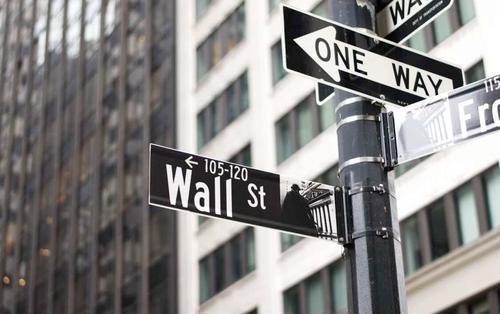Next Week’s Crucial Federal Reserve Meeting: Anticipating the First Rate Cut Since 2020
Wall Street Analysts’ Views on the Fed Move
Mixed Opinions on the Magnitude of the Cut
Wall Street analysts are divided on the magnitude of the Federal Reserve’s anticipated interest rate cut. The consensus leans towards a modest cut of 25 basis points (bps), but there is still a significant minority advocating for a more aggressive 50 bps cut. According to a summary from Investopedia, Deutsche Bank analyst Jim Reid noted that a larger cut could be surprising and unsettling, as the Fed has generally aligned with market expectations in the current policy cycle.
Former New York Fed president Bill Dudley is among those advocating for a 50 bps cut, arguing that the current rate is restrictive enough to warrant a more substantial reduction to spur economic growth. Conversely, analysts like Quincy Krosby of LPL Financial suggest that while lower rates are typically positive for equities, a cut driven by a deteriorating labor market may signal a slowing economy, raising concerns among investors.
Economic Indicators Influencing Opinions
Recent economic data has played a crucial role in shaping analysts’ expectations. For instance, core inflation rose by 0.3% in August, slightly above expectations, which has tempered enthusiasm for a larger cut due to concerns about reigniting inflation. Additionally, weaker August employment data and downward revisions to previous job growth have led some economists, such as those from Bank of America, to note a “small chance” of a 50 bps cut.
The labor market’s condition is another critical factor. Analysts believe a “significant deterioration” in the labor market would be necessary to prompt a 50 bps cut. Conditions such as payroll gains dropping below 100,000 or a sharp rise in the unemployment rate could be potential triggers for a more substantial cut.
Likelihood of the Rate Cut
Market Expectations
Market expectations for a rate cut are high, with the CME FedWatch Tool indicating a 99% chance of a 25 bps cut at the upcoming meeting on September 18, 2024. This aligns with the general consensus among analysts, who believe that a modest cut is the most probable outcome. However, the likelihood of a 50 bps cut has fluctuated, with expectations rising to 28% by Thursday before the meeting, as reported by Investopedia.
Historical Context
Historically, significant rate cuts are rare outside of economic crises. The last substantial cuts occurred during the COVID-19 pandemic and the 2008 financial crisis. Analysts like Nicholas Colas and Jessica Rabe from DataTrek Research note that a 50 bps cut historically signals an imminent recession, which adds a layer of caution to the current expectations.
Federal Reserve’s Stance
Federal Reserve Chair Jerome Powell and other influential policymakers have signaled a more dovish stance, indicating that it is time for policy adjustments. Powell’s statement that “the direction of travel is clear” suggests that the Fed is leaning towards initiating rate cuts. The minutes from the July FOMC meeting revealed that several policymakers acknowledged a plausible case for reducing rates by 25 bps, further solidifying the likelihood of a cut.
Impact on Stock Markets
Historical Performance
Historically, the stock market tends to perform well after the Federal Reserve cuts interest rates. Research from Hartford Funds indicates that U.S. stocks have averaged an 11% increase (after adjusting for inflation) one year following the Fed’s first rate cut. In cases where rate cuts occurred without a recession, the average return for stocks was 17%. Even during recessions following rate cuts, stocks still saw an average increase of 8%.
Sectoral Impact
Different sectors of the stock market may react differently to the rate cut. For instance, the health care sector has historically been a top performer following rate cuts. During the Fed’s easing in 1995, the health care sector returned 26.06% in the six months following the first cut. Large-cap stocks have also outperformed small-caps, with the Russell 1000 Index returning 11.46% compared to the Russell 2000 Index’s 9.05%.
Current Market Sentiment
Current market sentiment is cautiously optimistic. Analysts from Invesco suggest that the anticipated rate cuts could lead to a notable uptick in risk assets. Historical data supports this view, showing that stocks have typically performed well following rate cuts. However, there is also a warning that a larger cut could signal panic or that the Fed is falling behind in managing the economy, potentially leading to increased market volatility.
Potential Risks
While the overall sentiment is positive, there are potential risks associated with the rate cut. Analysts warn that a larger cut could signal panic or that the Fed is falling behind in managing the economy, potentially leading to increased market volatility and negative perceptions about economic health. Additionally, the immediate relief in borrowing costs for consumers and businesses may be minimal, indicating a gradual adjustment in financial conditions rather than a rapid market response.
Conclusion
The Federal Reserve’s upcoming meeting on September 18, 2024, is highly anticipated, with markets firmly expecting a cut in interest rates. Wall Street analysts are divided on the magnitude of the cut, with the consensus leaning towards a modest 25 bps reduction. Recent economic data, including core inflation and employment figures, have tempered enthusiasm for a larger cut, although a 50 bps cut remains a possibility.
Market expectations are high, with the CME FedWatch Tool indicating a 99% chance of a 25 bps cut. Historically, the stock market has performed well following rate cuts, with different sectors reacting differently. Current market sentiment is cautiously optimistic, but there are potential risks associated with the rate cut, including increased market volatility and minimal immediate relief in borrowing costs.
Overall, the Federal Reserve’s decision will be closely watched, and its impact on the stock market will be significant. Investors should remain informed and consider the potential risks and rewards associated with the anticipated rate cut.


